This Product Can Change Your Life: the d.light story
Text by Simon Keane-Cowell
Zürich, Switzerland
05.12.10
Imagine, as a manufacturer, that your potential market is two billion consumers worldwide. This almost inconceivable figure is the ultimate scale of d.light's ambition, a consumer-products company set up by a pair of social entrepreneurs in 2007 to design and product lighting solutions for the one in four people on this planet who live without electricity. With two million lives already positively affected by d.light's innovative solar-powered lamps and counting, the company's story is only just beginning. Architonic spoke to co-founder and CEO Sam Goldman about this life-changing project.
The Rosetta Stone. A penny defaced by a British suffragette. A credit card. A recent BBC radio series entitled 'A History of the World' sought to explore how societal changes worldwide have, at various points in history, been precipitated by and reflected in material culture by presenting 100 objects, diverse in terms of type and provenance, from the British Museum's collection. 'What do the objects that we design and make tell us about ourselves?' was, in short, the central question that the project posed.
Children in India holding d.light's 'Kiran' solar lamp, which gives up to eight hours of light on a full battery and is up to five times brighter than a kerosene lamp; photo: Robin Chilton / d.light Design
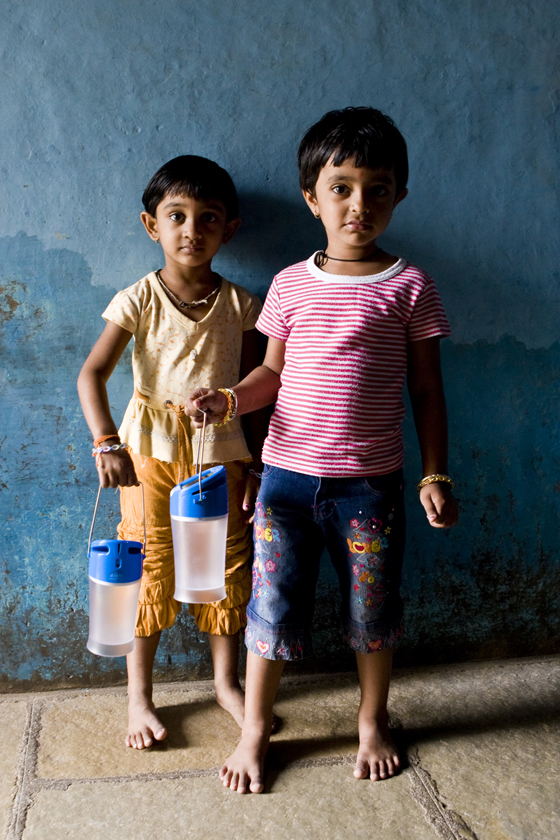
Children in India holding d.light's 'Kiran' solar lamp, which gives up to eight hours of light on a full battery and is up to five times brighter than a kerosene lamp; photo: Robin Chilton / d.light Design
×The final programme in the series focused on, what is at first glance, a rather unassuming piece of kit. A portable solar lamp and charger. The show's presenter Neil MacGregor's somewhat poetic description of the product's function – 'It's sunshine. Captured, harvested and stored. To be taken out and used whenever and wherever we need it' – certainly served to sex up the object to a degree, but doesn't in itself do justice to the remarkable global importance of this, at least visually, rather humble design. In a world of superfluous, questionable products, this one is truly needed.
The lamp in question is the 'Nova', designed and manufactured by d.light, an international consumer-products company set up in 2007 with a specific user group in mind – the one in four inhabitants of this planet who do not have electricity and, as it puts it quite starkly on its website, 'live in the dark'. The company's story is full of statistics. Social entrepreneur and company CEO Sam Goldman, a graduate of Stanford's 'Entrepreneurial Design for Extreme Affordability' programme, was shocked as a student to learn 'that 90 per cent of design in the world caters to 10 per cent of the population. The idea when we were creating d.light was that that should be flipped,' he explains.
d.light's 'Nova' lamp, which offers mobile charging in addition to solar-powered lighting; photo: d.light Design
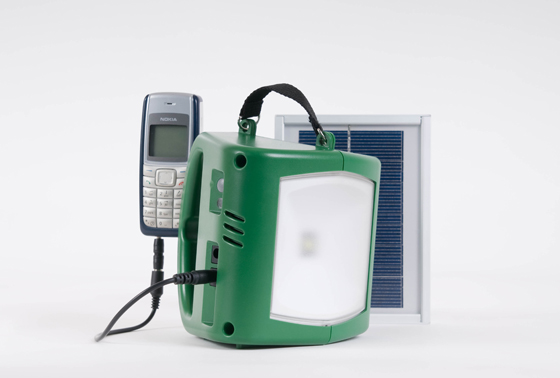
d.light's 'Nova' lamp, which offers mobile charging in addition to solar-powered lighting; photo: d.light Design
×The one-in-four statistic, as sobering as it is, is matched by the scale of the company's ambition in performing such a reversal: the company announced in November that its solar-lamp products have to date affected the lives of two million people living in power-starved households in over 40 countries, its main markets being India and East Africa. With targets of 50 million by the end of 2015 and 100 million by 2020, it's safe to say that the Goldman and his team don't do things by halves.
Goldman cites personal experience as a starting point for the d.light project. While living off-grid in Benin, he used, as is the only option in many parts of the world, a kerosene lamp 'every day and every night. It's a horrible source of lighting.' Indeed, kerosene is a dirty, dangerous and, in terms of the light it produces, relatively poor-performing fuel, detrimental over time to the health of its users, not to mention its hazardous nature in terms of fires.
A member of d.light's marketing team conducts research with potential customers in Tanzania; photo: Theo Steemers / d.light Design
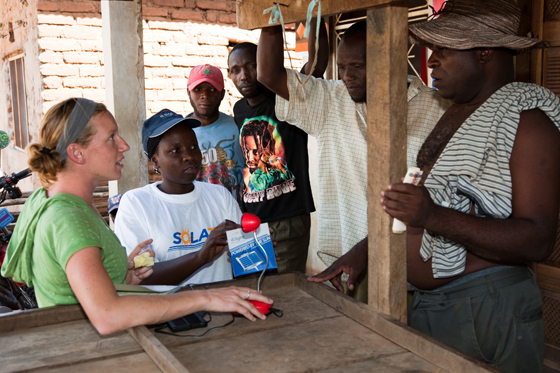
A member of d.light's marketing team conducts research with potential customers in Tanzania; photo: Theo Steemers / d.light Design
×The affordable product range that d.light have developed (in addition to the 'Nova', they have launched 'Kiran', with its integrated solar panel, and the 'Solata' desk lamp, all designed in Hong Kong and produced in Shenzhen, China) means up to ten times brighter illumination than that provided by kerosene, and in the form of a much more even, whiter LED-powered light. The effect that this has on quality of life in terms of allowing people to work, study and socialise beyond daylight hours is, almost needless to say, far-reaching. Such a positive impact on the lives of so many, in addition to the exemplary low-carbon credentials of its products, were underscored earlier this year when d.light won a covetable Ashden Award for Sustainable Energy.
But charity work this isn't.
d.light's work is firmly located in a sound business model and adheres to a well-defined design and development process. It's telling that Goldman refers to the end-users of his products as 'clients', 'customers' and 'target market'. Informed to a large extent by the human-centred approach to design taught at Stanford's design school, the company has invested heavily in meaningful research that works out precisely what its would-be users need and are prepared to buy. 'It was never about focus groups and surveys,' explains Goldman. 'It was about going out and living with people, and finding out what matters to them.' Dorcas Cheng-Tozun, the company's communications manager, emphasises this strongly ethnographic approach: 'Our design team spends hundreds of hours in the field, interviewing, observing and sometimes even living the lifestyles of our customers. We also engage in an extensive prototyping process that engages the end-users at ever step, getting their feedback on every single aspect of the product. Our customers have the final say in how our products are designed.'
A shopkeeper in Tanzania uses d.light's 'Nova' solar-powered lamp to illuminate his store. The light offers a brighter, more even light that traditional kerosene; photo: Theo Steemers / d.light Design
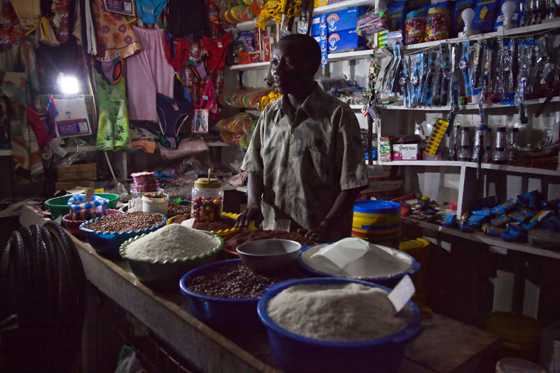
A shopkeeper in Tanzania uses d.light's 'Nova' solar-powered lamp to illuminate his store. The light offers a brighter, more even light that traditional kerosene; photo: Theo Steemers / d.light Design
×Which is as good thing, seeing as the fact that they have a particular and rather serious need doesn't mean that they aren't demanding. Durability is one thing, but good design appears to be creeping up the list of criteria for d.light's consumers. Interestingly, it's a different object type that appears to be changing expectations in the field. 'Design didn't used to be that important,' says Goldman, 'but now with mobile phones and mass media in farther-off places, people are demanding things that are much better-designed. Better quality, too, but at lower prices.'
What about the way these products look? Their form and aesthetic presence? Goldman: 'We try to get the most aesthetics we can without compromising on cost. Especially when our customers have very little income, they are really paying a lot for functions and features. That many change over time if we decide to target customers that have slightly more disposable income.' This broadening of the d.light's market, while a possibility at some stage in the future, is not what it's primarily about, however. 'We have the design expertise in-house now to make amazing urban products, too,' explains Goldman. 'Or speciality solar lights for gardens and so on. We could easily do it and make much higher margins, but that's not why we're doing this.'
A member of d.light's product-development team interviews end users in rural India, under the light of a 'Kiran' lamp; photo: Robin Chilton / d.light Design

A member of d.light's product-development team interviews end users in rural India, under the light of a 'Kiran' lamp; photo: Robin Chilton / d.light Design
×This precisely is what makes d.light such a compelling case study. On the one hand it's a business like any other, with a robust commercial MO, designing and manufacturing products for a clearly defined market. It's certainly not a loss-making enterprise. But the company, established as it was with a clear set of social objectives, invests all of this profit into new product development or hiring more people. As d.light demonstrates, social commitment doesn't have to be at odds with healthy business. Yet, as Goldman is keen to point out, you don't go to work for the company if you want to make lots of money. 'Most of us could earn more by doing other things, if that's what we were after.' It's this shared vision of the 70-strong team that drives d.light's success.
But it's not only the staffers who are on the same page. d.light's investors, too, are, to a large extent, on the bus. 'We focused on getting a 50/50 mix of more commercial investment money that would really drive the company towards commercial sustainability and more social investment money that would ensure we kept sight of our social objectives,' explains Goldman. 'That's a healthy balance. What can happen if the going gets touch and you have only commercial investors is that decisions start getting made that might not optimise on the social impact.'
d.light CEO and co-founder Sam Goldman: 'So many people have a lot of ideas and spend a lot of time talking about them, stuck in whatever job they're in. It's not going to happen until a sacrifice is made and you go for it.'
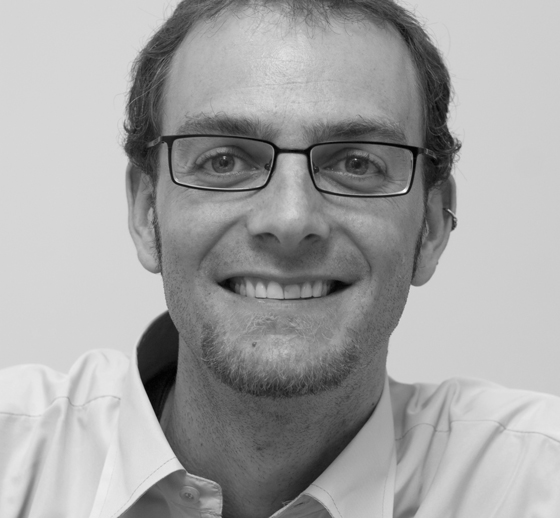
d.light CEO and co-founder Sam Goldman: 'So many people have a lot of ideas and spend a lot of time talking about them, stuck in whatever job they're in. It's not going to happen until a sacrifice is made and you go for it.'
×If it all sounds like a walk in the park, it isn't. Goldman sighs when I ask him what the challenges have been for d.light. 'They're just so many. Making low-cost, high-quality products is a challenge. Very few people do that. It's very hard to get them to the price point we want to work at. It was hard to find the right people to work in our company all over the world, to make make big sacrifices to join a risky, early-stage social venture. And then getting the products into the markets and convincing good distributors to take up this completely new category. That's super hard. And then you have to educate the customers and do some sort of marketing, and no one has a budget for this. And then when customers pick it up, they have to be serviced and then you've got to encourage new customers to come on board. And then the product cycle starts anew.' You get the picture. It's one big challenge.
I ask Goldman what such a Herculean undertaking has taught him. What has he learnt that he could pass on to other would-be social entrepreneurs? 'You've just go to do it,' he says. 'So many people have a lot of ideas and spend a lot of time talking about them, stuck in whatever job they're in. It's not going to happen until a sacrifice is made and you go for it. It's when that happens that other people start believing in you. If I'm an investor and somebody is still in their job talking to me about money, I wouldn't think they're very serious. The moment they quit their job and put their savings into it, I'm going to believe in them more.'
What are you waiting for? You heard the man.
.....





